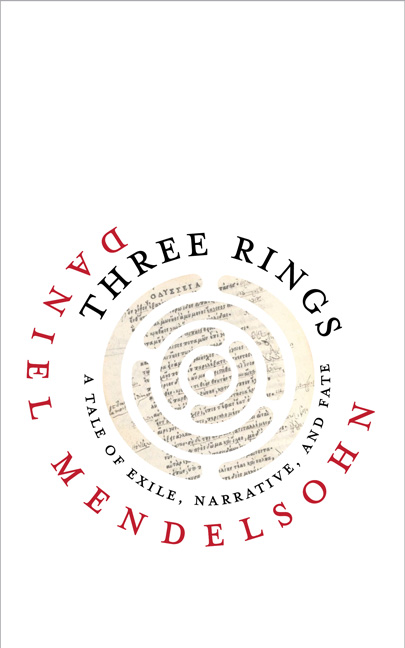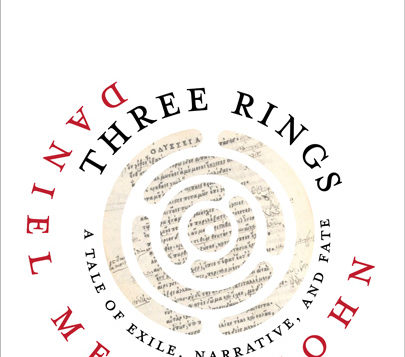 THREE RINGS
THREE RINGS
A Tale of Exile, Narrative, and Fate
by Daniel Mendelsohn
Univ. of Virginia. 116 pages, $19.95
TO BEGIN, let’s circle back to an earlier book by Daniel Mendelsohn, An Odyssey: A Father, a Son, and an Epic, an engaging account of the semester he invited his 81-year-old father to attend his seminar on Homer’s epic poem. That book, which I highly recommend, is not only a brilliant reading of Homer but also the story of a contemporary father and son rediscovering each other. In the end, Mendelsohn, who had “vainly envisioned myself as some kind of pedagogical Odysseus,” learned as much from his father as his father learned from him. “You never know, really, where education will lead, who will be listening and, in certain cases, who will be doing the teaching.”
Mendelsohn begins his new book with an account of the difficulty he had in writing the previous one. As he was drafting An Odyssey, he labored under “narrative despair”: “I had no idea how to organize the story. … There was a lot of incident but it wasn’t yet a story.” The solution he hit upon was to adopt a narrative technique—so-called “ring composition”—that Homer himself employed. In ring composition, the writer “involutes” narrative digressions into the larger story line, eventually tying together these twists and turns into the overall action of the story. These detours, Mendelsohn says, “can enhance rather than detract from a given theme.” Indeed, “the way to avoid boring uniformity is to add more and more turns.”
Mendelsohn’s new book is an over-the-top celebration of ring composition.







